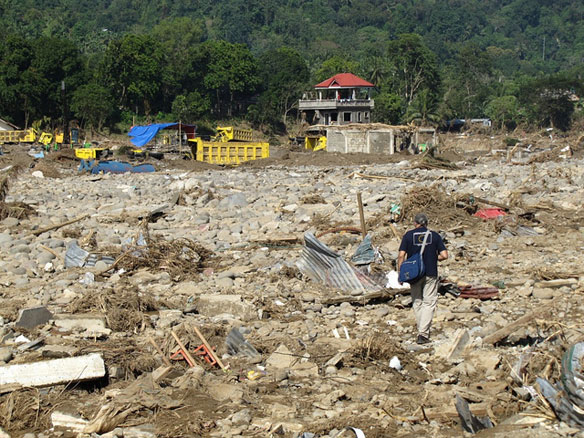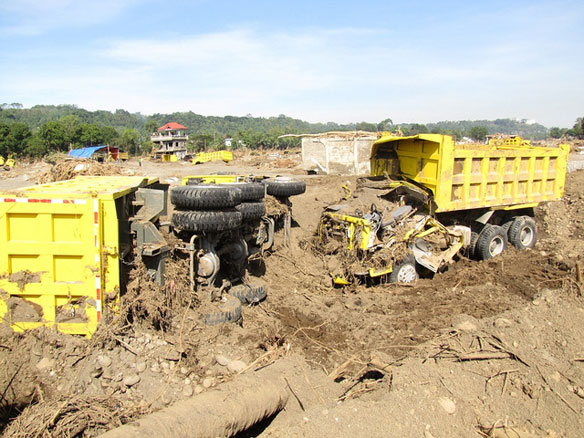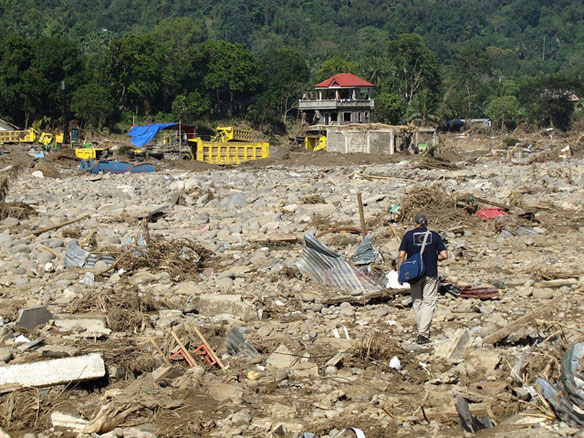
Philippines, Mindanao, Cagayan de Oro 21 December 2011. ECHO expert walks among the destruction to try and meet survivors. Even houses made from brick and concrete could not withstand the force of flood waters. Captions and Photos source: ©© Mathias Eick EU/ECHO / EC Humanitarian Aid & Civil Protection
Excerpts;
The typhoon that hit Mindanao in the Philippines before Christmas to claim 1,000 lives and leave nearly 50,000 homeless was a shock, but not a surprise. In 2009, campaigners and scientists simulated the effects of a tropical storm on the island, and predicted that the cities of Cagayan de Oro and Iligan would be hit by flash floods. At the time, the prediction was dismissed as alarmist.
The scientists were conducting an exercise as part of a UN strategy for disaster reduction, to which 168 nations signed up in 2005. They did their bit: they identified a natural hazard. But the Philippine government had yet to enact its own disaster management plan; the two coastal cities remained without protection, and catastrophic flooding affected more than 300,000 people.
The lesson is pertinent, but not new…Three years before Hurricane Katrina devastated New Orleans in 2005, there were warnings about the city’s vulnerability.
Even when we do know about climate-related hazards, we still fail to act…
Such lessons are worth learning. With 80 million new souls on the planet each year, most of them in the developing world, the numbers of potential victims will go on increasing. And as the planet warms, so too does the potential for meteorological disaster…

Philippines, Mindanao, Cagayan de Oro 21 December 2011. These large trucks were simply smashed and tipped over demonstrating the force of the flood waters and the debris. Captions and Photos: ©© Mathias Eick EU/ECHO / EC Humanitarian Aid & Civil Protection









